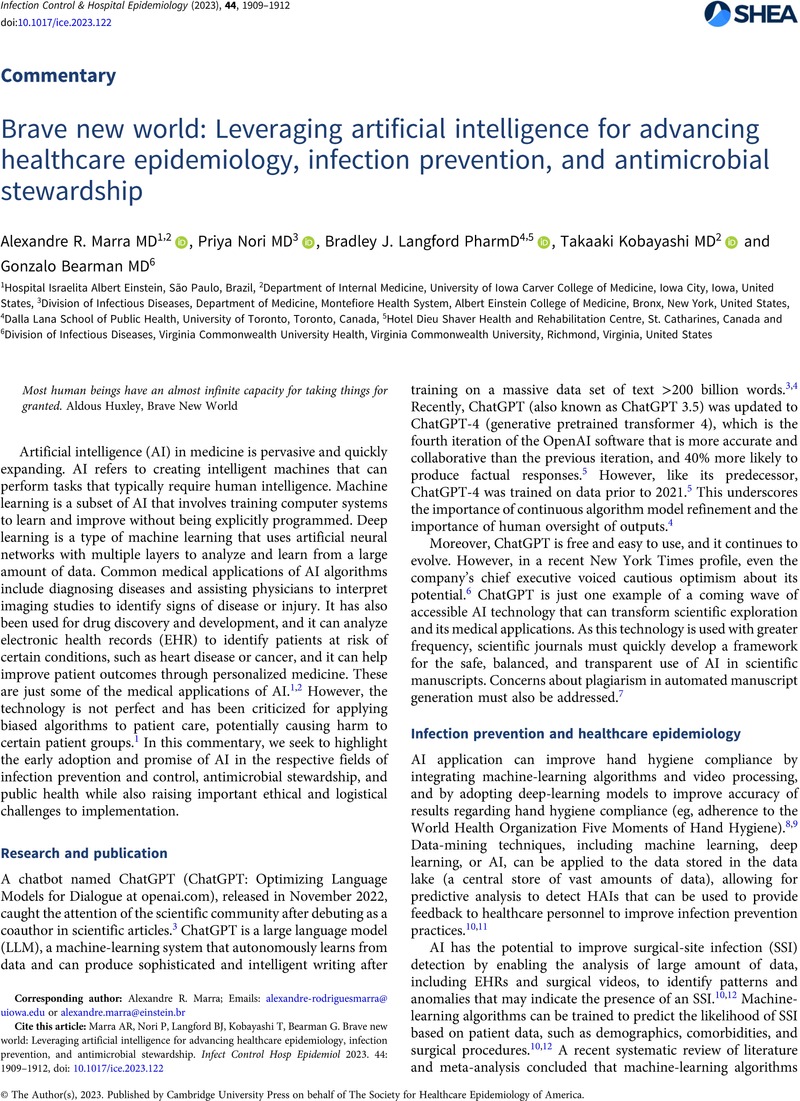Crossref Citations
This article has been cited by the following publications. This list is generated based on data provided by Crossref.
Ahmed, Sirwan Khalid
Hussein, Safin
Qurbani, Karzan
Ibrahim, Radhwan Hussein
Fareeq, Abdulmalik
Mahmood, Kochr Ali
and
Mohamed, Mona Gamal
2024.
Antimicrobial resistance: Impacts, challenges, and future prospects.
Journal of Medicine, Surgery, and Public Health,
Vol. 2,
Issue. ,
p.
100081.
Giacobbe, Daniele Roberto
Marelli, Cristina
Guastavino, Sabrina
Mora, Sara
Rosso, Nicola
Signori, Alessio
Campi, Cristina
Giacomini, Mauro
and
Bassetti, Matteo
2024.
Explainable and Interpretable Machine Learning for Antimicrobial Stewardship: Opportunities and Challenges.
Clinical Therapeutics,
Vol. 46,
Issue. 6,
p.
474.
Wolfensberger, Aline
Scherrer, Alexandra U.
and
Sax, Hugo
2024.
Automated surveillance of non-ventilator-associated hospital-acquired pneumonia (nvHAP): a systematic literature review.
Antimicrobial Resistance & Infection Control,
Vol. 13,
Issue. 1,
Non, Lemuel R
Marra, Alexandre R
and
Ince, Dilek
2025.
Rise of the Machines - Artificial Intelligence in Healthcare Epidemiology.
Current Infectious Disease Reports,
Vol. 27,
Issue. 1,
Hosen, Mohammad Saddam
Fakir, MD Shahidul Islam
Hawlader, Shamal Chandra
Rahman, Farzana
Karim, Tasmim
and
Uddin, Muhammed Habil
2025.
Generative AI-Driven Decision-Making for Disease Control and Pandemic Preparedness Model 4.0 in Rural Communities of Bangladesh: Management Informatics Approach.
European Journal of Medical and Health Research,
Vol. 3,
Issue. 2,
p.
104.
Crawford, Allison D.
Geramifar, Lindsey Linder
McGlothen-Bell, Kelly
and
Salisbury, Emily
2025.
A reproductive justice investigation of utilizing digital interventions among underserved populations with criminal legal system supervision: Policy brief.
Nursing Outlook,
Vol. 73,
Issue. 2,
p.
102349.




